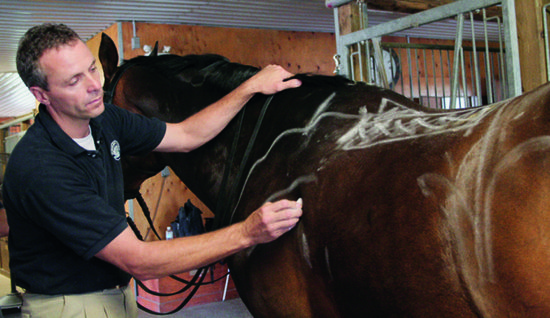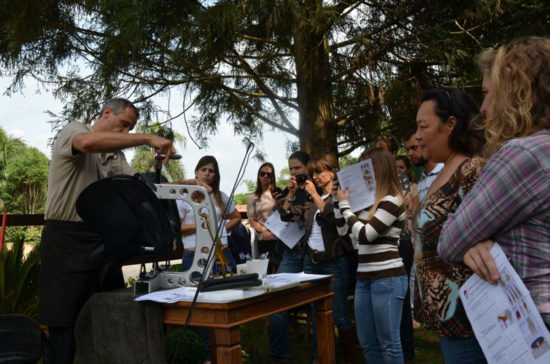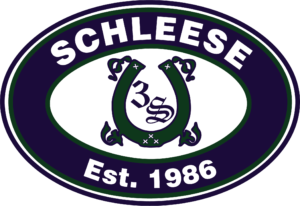Saddle Fit and Trainer Certification
I am really gratified to see how the German professional trainer’s association, the FN, and the German National Riding School have started to see the necessity of including a module on saddle fitting for their trainer certification programs. I hope that at some point the North American factions will also agree that the value of this is crucial to their curricula since trainers are such key influencers in the industry and should have at least a basic knowledge of pretty much anything that has to do with the well-being of their clients – both two-legged and four-legged!
I have worked with top trainer Andrea Koslik in Germany for many years, and I found it worthwhile to share with you what she has to say on this topic. She is also a physiotherapist and an avid competitor herself, and teaches Bereiter and Pferdewirtschaftsmeister/Reitlehrer at Warendorf.

“Riding is a very demanding sport and the only one in which the athlete is dependent on the interaction of another being in order to move. The topic of saddle fit is a key consideration when I teach my course in biomechanics. I often compare the saddle to a shoe – which should be comfortable and fulfill its purpose – except that this ‘shoe’ needs to fit two beings equally well at the same time. This leaves the saddle maker with a huge responsibility – one that requires good basic knowledge in human and equine anatomy. Many of my students are now adamant that a saddle needs to work equally well for either gender – which infers that the anatomical differences between men and women need to be taken into consideration during design.
Knee rolls are of specific interest to me personally. Through personal observation, which is substantiated by research, the opportunities for human activity and movement nowadays continue to dwindle. Children spend much of their time in inactivity, watching TV, playing games on their computers and cell phones. The result is necessary prosthetic compensation to make up for this loss in muscle development; for riders it is the addition of huge knee rolls on the saddle, which help to keep the rider in a static position while hindering movement. A pliable seat for the rider and taking up the rhythm in motion are no longer achievable. Although at first glance it may seem that the rider is sitting properly balanced and straight, it soon becomes apparent that the rider is actually sitting stiffly but thinking that this is the way it should feel. The complementary muscle interactions are not in harmonious states of contraction and relaxation, which means that the rider cannot give the aids properly. How can she properly relay the message to the horse to achieve rhythm, suppleness, and connection – which are only the requirements from the first training scale – if the saddle is not helping? The rider feels cramped, experiences pain and possibly long term damage (up to and including slipped discs and torn muscles). This is the possible result regardless which discipline you ride in – which is why the saddle should not only be correct for the rider’s gender and anatomy, but also appropriate for the riding discipline.

I only expect good things to result in the sport of riding when riders, trainers, veterinarians, saddlers and physiotherapists continue the conversation to combine their expertise and experiences for the common good of horse and rider. Only then can the saddler fulfill his role as manufacturer of the interface between horse and rider and open the door for discourse.”
It is gratifying that over the past few years Saddlefit 4 Life® has been able to forge alliances with some key associations and organizations in the industry. S4L has been endorsed for USDF University Credits for members attending clinics, seminars, lectures, and presentations by our experts all over North America; the Certified Horsemanship Association has also given their blessing to the baby steps of incorporating saddle fitting and all it entails into their training presentations. Saddlefit 4 Life® is an educational partner with both the American Riding Instructor’s Association and the Ontario Equestrian Federation, and continues to make inroads on the educational side with Equine Canada. It will only become a mission of more urgency when the riding public begins to expect and demand this basic training of their experts – so many of the issues that arise in riding (which I will go into over the next weeks and months) are sometimes very easily (and less expensively!) remedied with something so simple as having your saddle evaluated for fit, and if it is possible – adjusted accordingly.
Happy Riding!
